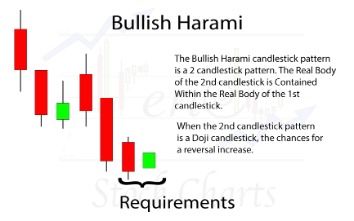7 Best Renewable Energy Stocks to Buy in July 2022
Content

Net loss stood at 28 cents per diluted share, compared to earnings of 3 cents per diluted share a year ago. How long the company has been in business, its annual revenue and its ESG score are all good things to consider before buying a stock. NerdWallet, Inc. is an independent publisher and comparison service, not an investment advisor. Its articles, interactive tools and other content are provided to you for free, as self-help tools and for informational purposes only.
Objectively, the underlying company features excellent sales growth and solid profit margins, making it an enticing candidate for renewable energy stocks. No, if your energy stocks decrease in value, you likely will not owe any money. If the company you invested in goes out of business, you lose the value of your investment, but you generally will not lose more than you invested unless you engaged in riskier trading strategies. For instance, if you bought a wind energy stock for $100 and the company went out of business, you would lose the $100, but you would not owe $100. Contrary to popular belief, performance is not necessarily the most important thing to think about.
First Solar (FSLR)
“Wind turbines, solar farms and battery storage facilities are popping up across the nation to deliver clean, affordable electricity.” The renewable energy industry is poised to move the world into an era of cleaner energy consumption, bringing our daily lives into a far balance with ecology. Everyone seems to be excited about the industry, from individual consumers to corporations to governments.

On the date of publication, Samuel O’Brient did not have (either directly or indirectly) any positions in the securities mentioned in this article. The opinions expressed in this article are those of the writer, subject to the InvestorPlace.com Publishing Guidelines. Digital trading platform CMC Markets has been analyzing data on the renewable energy stocks that investors are most commonly seeking out. The platform recently revealed the most Googled renewable energy stocks, providing insight into the companies investors are most closely following — and why. Renewable energy stocks are shares in companies that are related to the renewable energy sector.
General Electric Company (GE)
Another well-known ETF, the company offers products and services related to renewable energy such as solar, wind, hydro and geothermal generation, and transmission. Some of the holdings the company currently has includes but are not limited to AES Corp. (AES), FuelCell Energy (FCEL), and SunPower Corp (SPWR). For those who are unaware of what an ETF is, exchange-traded funds are bought much like stocks are but do not represent ownership of a part of a single company. Instead, buying ETF stocks gives you access to the profits being made by a host of companies at once.
- First Solar is a leading global provider of comprehensive photovoltaic (“PV”) solar energy solutions, which use its advanced module and system technology.
- Those factors could give a company the power to generate higher returns.
- Its historic core business has been in the production and sale of oil and natural gas as well as manufacturing chemicals.
While GE Vernova is still incurring losses, Aguilar believes Strazik can drive the unit to profitability next year and break even in renewables in 2026. The company produces an inverter system designed to optimize the energy created by solar panels. Ultimately, the inverter leads to more affordable energy and is a key part of SolarEdge’s business model. Within that massive bill, approximately $369 billion was set aside for energy security and climate change programs over the next 10 years. Many of those dollars will make their way into the renewable energy industry. Climate change is forcing companies and other institutions to focus on how they can do their part to decarbonize.
Clearway Energy, Inc. (NYSE:CWEN)
But what’s more, Brookfield is positioning itself to be one of the best stocks to buy in the in nuclear power field. The name General Electric (GE, $89.92) does not exactly evoke the image of renewable energy. But the early 2024 spinoff of its GE Vernova unit is expected to change all that.
In early June, U.S. President Joe Biden suspended tariffs on certain solar panels imported from a number of several Southeast Asian countries. Investors now expect a boost in utility-scale solar development projects, which would boost solar inverter suppliers like SolarEdge. And the dip has pushed the current dividend yield to a robust 4%. Meanwhile, Wall Street’s 12-month median price forecast for HASI stock stands at $55. Meanwhile, management expects distributable earnings per share to increase at a compound annual growth rate (CAGR) of 10% to 13% from 2021 to 2024.
The payments we receive for those placements affects how and where advertisers’ offers appear on the site. This site does not include all companies or products available within the market. Plug Power’s 319,000 average monthly searches indicate that many other investors share Navellier’s optimism that PLUG will rise in the coming months. From a financial perspective, NextEra Energy has a credit rating of BB with a stable outlook from S&P. With a healthy balance sheet, the company is positioned for steady growth through asset acquisition from the parent. NEE stock also seems reasonably valued at a forward price-to-earnings-ratio of 29.1.
What’s interesting here is that Hannon Armstong isn’t trying to pick a winning technology or even a winning company. It just wants to build a portfolio of loans that are backed by strong, predictable cash flows. That’s what supports the REIT’s ability to provide investors with regular dividend payments. The current dividend yield is 6.4%; it’s worth noting that the clean energy pullback has boosted that figure back toward historical highs. Hannon Armstrong has increased its dividend in each of the past five years. Among wide market instability, 2022 was a particularly challenging year for renewable energy stocks.
Strong returns for investors
If you want to skip our detailed analysis of these stocks, go directly to the 5 Best Renewable Energy Stocks to Buy According to Hedge Funds. Polaris Infrastructure is an attractive name among small-cap renewable energy stocks. Further, a dividend yield of 3.9% also makes the RAMPF stock worth considering. Among renewable energy stocks, Clearway Energy is another attractive name with a robust dividend yield of 4.94%. Additionally, CWEN stock trades at a forward P/E of 20.0, which seems attractive considering broad market valuations.
Danish renewable energy provider Orsted is listed on the Nasdaq Copenhagen with a market capitalisation of £32 billion. Enphase Energy is a leading solar technology company, headquartered in California. The company has a market capitalisation of $34 billion and recently qualified for the Nasdaq-100 index. Returns data is sourced from Morningstar Direct and is based on total annualised returns in the periods ending 31 December 2022.
- Another factor that affected the industry is the recent flurry of layoffs in the tech sector, as data suggests that tech workers are the biggest customers of renewable energy products.
- To be fair, Stem ranks among the choppier names for renewable energy stocks.
- Daqo New Energy Corp is a leading manufacturer of high-purity polysilicon for the global solar PV industry.
- NextEra recently announced its Real Zero plan to eliminate carbon emissions from its business by 2045.
This view suggests that future legislation could further boost the country’s investment level. Born in Maine and Living just outside of New York City, Jenna holds an MBA in Finance from the University of Maryland and has been actively trading stocks for nearly 11 years. The potential for earning in both the short and long term is limitless if you take advantage right now.
Best Renewable Energy Stocks That Also Pay Dividends
As countries like China and India continue to develop, their need for energy will grow, too. This means there will be plenty of future demand both for existing energy sources like oil and gas as well as growing needs for alternative sources. ExxonMobil has been aggressively spending to finance long-term energy production. While this temporarily hurt its cash flow and led to a cut to its bond rating in 2020, it’s banking on future oil prices rising for these investments to pay off. By market cap, ExxonMobil is the largest non-government-owned energy company in the world.
By the end of 2020, the company saw revenues of $18 billion and boasts stock gains of 11.22%. Though the recent rise of interest rates might prove to hurt the company in the short term, its management has stated that overall they expect to enjoy continued growth in the years to come. What many investors and analysts latch on to is the fact that the company has given a 120% return in just 12 months. Their stocks have also seen gains of 53.26% in the past year as well. However, investors will generally be charged a foreign exchange fee of around 0.5% to 1.0% of the value of the purchase. Many platforms also charge a higher trading fee on non-UK shares.
The Company’s integrated power plant solutions deliver an economically attractive alternative to fossil-fuel electricity generation today. First Solar is categorized as one of the most profitable solar energy providers with a promising future. While Brookfield Renewable Partners’ portfolio of assets spans clean energy generation types, Hannon Armstrong (HASI 3.30%) takes a slightly different approach. This real estate investment trust (REIT) provides loans to developers and owners of clean energy assets. Generally, the assets have long-term power purchase agreements that back their cash flows, which gives greater clarity to the ability of the assets to support the loans.
Plug Power is building the hydrogen economy as the leading provider of comprehensive hydrogen fuel cell turnkey solutions. Energy is a major sector of the economy and accounts for trillions of dollars each year. The world economy needs power, creating sustained, long-term demand for the energy sector. This energy giant discovers new reserves of oil and gas around the world while also developing novel technologies to extract more energy from existing reserves. The rebound in oil demand has helped its stock performance and future prospects as it can now sell its production for more. Headquartered out of San Ramon, Calif., Chevron is the second largest energy company in the United States and the third largest in the world.
TotalEnergies SE (TTE)
This means less savings for the homeowner, which could hurt solar panel sales. Westinghouse services about half the global nuclear power generation sector and is the original equipment manufacturer to more than half of the global nuclear reactor fleet. At the end of 2022, corporations had contracted 77 gigawatts (GW) of clean power from utility-scale projects. Half of that power is enough for a cross-country drive by 15 million Teslas. This clean power demand by corporations is a “critical part” of America’s energy transition, the trade group says. “America is in the midst of an energy transition,” according to the 2022 report by trade group American Clean Power.
One of the most notable ETFs in the renewable energy market is Invesco Solar ETF. The downside of this though is that Invesco Solar ETF, and ETFs in general, might not have as high a return as you might otherwise expect from more direct investments. What’s attractive here is that you get a lot of diversification (there are roughly https://g-markets.net/helpful-articles/dragonfly-doji-definition/ 100 holdings) without a huge amount of costs, given the management fee of just 0.4%. That said, the dividend yield is just 1% or so, which is pretty miserly compared to those of the two options above. That’s to be expected, though, given that many of the stocks iShares Global Clean Energy ETF owns are small and relatively young.

Leave a Reply
Want to join the discussion?Feel free to contribute!